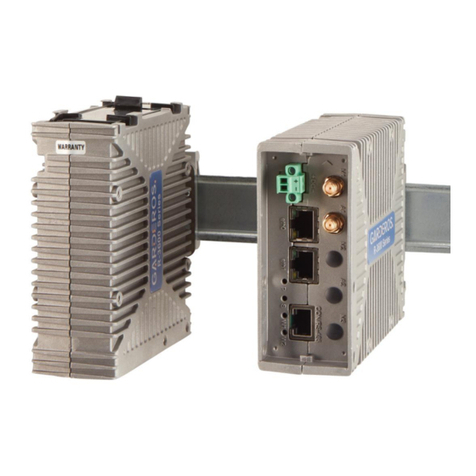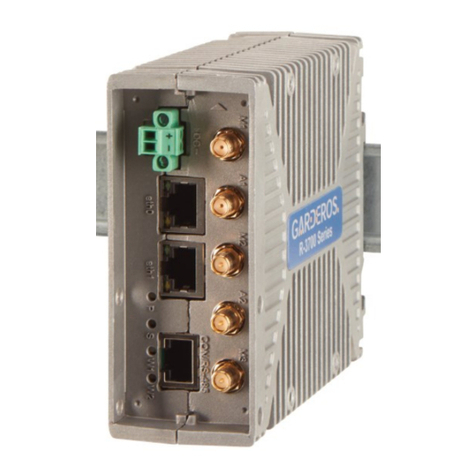
© 2019 Garderos GmbH 2/23
1 Safety instructions
Do not open the casing. Warranty shall be void if the warranty seal has been
tampered with.
Don't use or install the device in an explosive atmosphere!
Don't touch any contacts with metallic or pointed items.
This device has no power switch. Please disconnect the power before any
operational work.
In case of any damage to the device, it must not be put into operation.
Do not install the device during a thunderstorm!
Protect the device from heat sources and direct sunlight.
Protect the device from aggressive fluids and vapors.
The router emits electromagnetic waves. To prevent other devices from
being disturbed and to protect other people, install the router only as
described in this document and make sure to comply with safety distances.
Unauthorized persons must not get nearer than 60cm to the
GSM/UMTS/LTE antennas.
Unauthorized persons must not get nearer than 7cm to the WLAN
antennas.
Depending on the router type, the antenna and configured networks the
safety distances may be smaller. Use the calculations in the Annex to
calculate the minimum safety distance of your router.
Remove the power connector before performing any maintenance or
cleaning work near to the antennas or directly at the router.
Read these safety instructions before handling or installing
the device.
Risk of burns! The device can operate in surroundings of
more than 70 °C, so the surface can get very hot. Install the
router inaccessible for unauthorized personnel. Before
touching the router, remove the power supply and wait for
10 minutes for the router to cool down or wear protective
gloves.





























